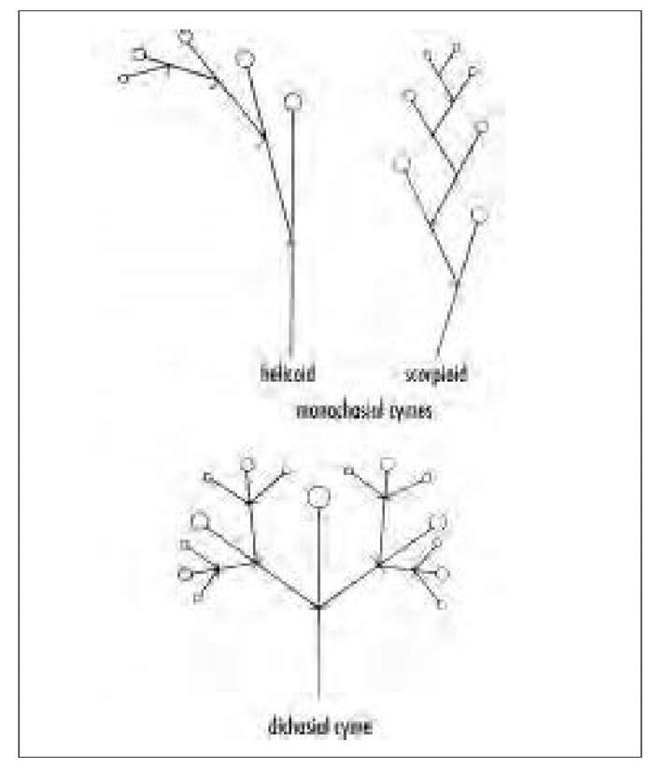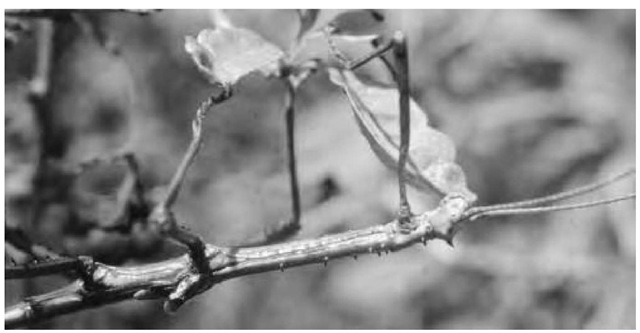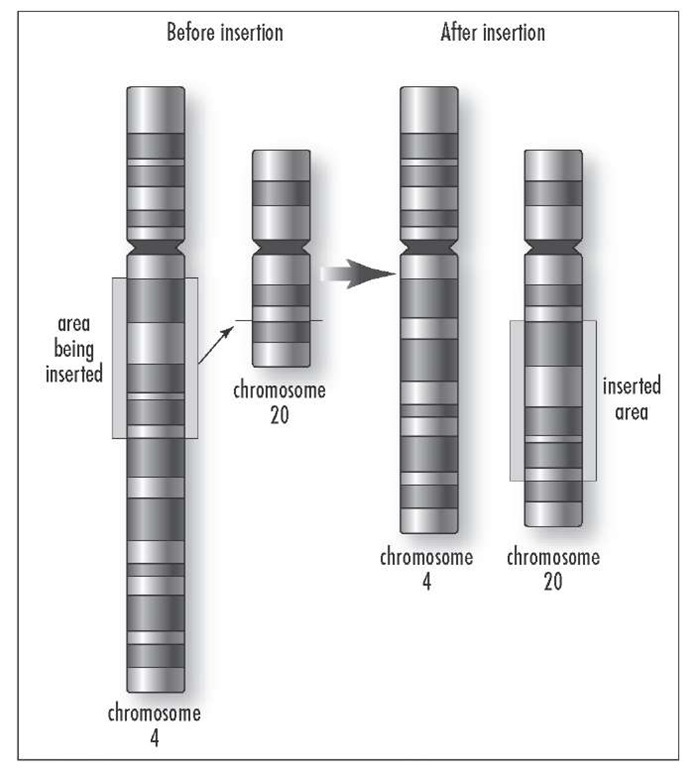Hypertonic solution A solution whose solute concentration is high enough to cause water to move out of cells via osmosis.
Hypertrophy A condition where an organ or tissue enlarges or overgrows due to an increase in the size of its cells, not the number of cells.
Hyperventilate The act of excessive breathing, causing a loss of carbon dioxide in the blood. other symptoms include faintness or fainting and numbness around the mouth, fingertips, or toes.
Hypha The threadlike, filamentous, absorptive structures of fungi. When combined to form mats, they are called mycelia and are the main body of fungi.
Hypogynous ovary (superior ovary) Ovaries that have the calyx, corolla, and androecium attached below the ovary to the receptacle.
Hypoosmotic solution A solution whose osmotic pressure is less than that of another solution.
Hypothalamus An area in the posterior part of the brain beneath the thalamus that contains nerve cells and controls many autonomic functions. Controls the pituitary gland and is the control site for feeding, drinking, temperature regulation, emotion, and motivation.
Hypothesis The formal declaration of the possible explanation of a set of observations that needs to be tested and proved.
Hypotonic solution A solution where solute concentration is low enough to cause water to move into cells via osmosis.
Ileum The third and last section of the small intestine.
Imaginal disk A region or cluster of cells in the larvae of an insect that are undifferentiated and are determined to form specific organs or tissues during metamorphosis to the adult stage.
Imaging A medical diagnostic technique by which useful organ images are obtained from the radiation emitted by radionuclides that are introduced into organs, or from radiation absorbed by atomic nuclei within the organs. Typical examples are imaging obtained by recording the radiation emitted by a radionuclide such as 99mTc, and the XH-NMR imaging obtained by whole-body nuclear magnetic resonance measurements.
Immigration The moving into a location in which the individual is not a native of the area. See also emigration.
Immune response The process by which the body of an organism recognizes and fights invasion of microorganisms, viruses, and other substances (antigens) that may be harmful to the body; the total time from recognition of the intrusion to attack or tolerance of the antigen.
Immunoglobulin (Ig) Also known as antibodies, these are proteins created by plasma cells and B cells that are designed to control the body’s immune response by binding to antigens. There are more than 1,000 possible antibody variations and five major types, and each is specific to a particular antigen. of the five main types—IgA, IgD, IgE, IgG, and IgM—the most common are IgA, IgG, and IgM. See also antibody.
Immunogold A method for visualizing proteins in electron microscopy within a cell using gold particles attached to an antibody that binds specifically to that protein.
Imperfect fungi Fungi (deuteromycetes) that do not have sexually produced spores as part of their life cycle. They cause skin diseases in humans and include the organisms causing ringworm and athlete’s foot.
Impotence (erectile dysfunction) Refers to a man’s inability to achieve or maintain an erection suitable enough to complete sexual intercourse.
Imprinting A type of behavior learned during a certain critical time in development that promotes the learning of behavior and characteristics of the species and is difficult to reverse, regardless of circumstances. An example is the attachment behavior among birds to the mother during the first few hours after hatching. In genetics, it is when an allele at a particular locus is inactivated or altered depending on whether it was inherited by the mother or father.
Inbreeding The production of offspring by closely related parents with a high likelihood of carrying similar deleterious recessive mutations that may be expressed in the phenotypes of the offspring. The resulting populations may suffer a higher than average incidence of recessive genetic disorders.
Incest When two people too closely related have intercourse, i.e., a parent and child, or two first cousins. Usually socially prohibited.
Incomplete dominance A type of inheritance where the heterozygote that has two different alleles (one dominant, one recessive) of a gene pair has a different appearance (phenotype) compared with the homozygous (identical alleles for a given gene) parents.
Incomplete flower A flower lacking one of the four major parts: sepals, petals, stamens, or carpels.
Incomplete metamorphosis Part of a life cycle of an insect where the nymph stage, or immature form, resembles the adult after hatching and slowly changes into the adult form through a series of molts; does not have a pupa stage. Examples are grasshoppers (Oth-optera), aphids, cicadas, and whiteflies. A form of incomplete metamorphosis called gradual metamorphosis is when there is no pupal stage and the nymphs look like the adults minus the wings. Unlike complete metamorphosis, which has four stages (egg, larva, pupa, and adult), incomplete metamorphosis only has three (no pupa).
IND Investigational new drug.
Indeterminate cleavage A form of cleavage found in dueterostomes (e.g., chordates and echinoderms) where each cell produced during early cleavage division has the ability to develop into a complete embryo.
Indeterminate egg layer The ability to induce birds to lay more eggs by removing or destroying eggs they have already laid. Also called double clutching.
Indeterminate growth When an organism continues to grow throughout its life span (ontogeny); characteristic of plants.
Indeterminate inflorescence When the central part of the flower is the last to open. Terminal flowers open last and lower flowers open first.
Index fossils A biologic method of time correlation using commonly found fossils that are limited to a specific time span. For example, trilobites, though common in the Paleozoic, are not found before the Cambrian period. Some lineages of fossil organisms evolved rapidly, so that the vertical stratigraphic range of the species was short but the species was widespread. A dating technique to correlate the ages of rocks in difference locations (biostratigraphy). See also geological time.
Indigenous An organism that is native and not introduced in a specific environment with certain boundaries. See also endemic species.
Induced fit The change in the shape of an enzyme’s active site to accommodate and bind firmly to the substrate that enters the site.
Induction The process whereby one set of embryonic cells influences the development of another set of embryonic cells.
Industrial melanism A natural selection process that developed in the 19th century, when certain species such as moths developed a coloration adaptation to compete with industrial soot pollution (e.g., the blackening of tree bark). England’s peppered moth (Biston betularia) is the often-used example.
Infanticide The purposeful killing of an infant or baby after birth or shortly after.
Infectious The ability to transmit a disease; an infectious disease caused by some microbe or agent that is infectious.
Inferior ovary (epigynous ovary) Having the calyx, corolla, and androecium appear to rise from the very top of the ovary.
Inflammatory response The reaction the body takes to invading microorganisms. The response includes: an increase in the blood flow to the infected area to increase the number of leukocytes that can fight the invader; the complementary thinning of the local blood capillary cell walls to allow the increased number of leukocytes to enter along with the leukocytes releasing cytokines, immune-signaling chemicals, to call more leukocytes to the area; and increase in temperature at the infected site.
Types of cyrose inflorescence.
Inflorescence Refers to the various positional and structural arrangements of a flower cluster on a floral axis. The two main categories are racemose (indefinite and not terminating in a flower) and cymose (definite,floral arrangements can be in the form of a panicle [slightly elongated with central axis with branches that branch themselves]. Examples of racemose inflorescence are: raceme (elongated with central axis composed of simple pedicels of about equal length); spike (elongated with central axis with sessile/subsessile flowers); corymb (flat topped with vertical axis with pedicels or branches of unequal length); or umbel (several branches from a common point of the peduncle).
Types of racemose inflorescence.
Ingestion The process of obtaining nutrients by het-erotrophic organisms by eating other organisms or other organic matter.
Inhibition The decrease in the rate of a reaction brought about by the addition of a substance (inhibitor).
Inhibitor A substance that decreases the rate of enzyme catalysis or other chemical reaction.
Inhibitory postsynaptic potential (IPSP) A small electrical charge of a few millivolts, creating a local hyperpolarization (increase in membrane potential on the negativity of the inside of the neuron) in the membrane of a postsynaptic neuron. Caused when an inhibitory neurotransmitter from a presynaptic cell binds to a postsynaptic receptor, which makes it difficult for a postsynaptic neuron to generate an action potential.
Innate behavior Behavior that is performed without prior learning; considered hardwired in the nervous system. Usually a behavior that is inflexible and built in.
Inner cell mass After a sperm fertilizes an egg, the resulting single cell that is produced is referred to as totipotent, meaning that it has the potential to form an entire organism. Cell division begins immediately, and after a few days the cells begin to specialize, forming a blastocyst, a hollow sphere of cells. The blastocyst has an outer layer of cells, and inside the sphere is the inner cell mass, a cluster of cells that protrude into one end of the cavity and will develop into virtually all of the human tissues.
Inositol 1,4,5 triphosphate (IP3) Acts as a second messenger; increases intracellular calcium and activates calcineurin, an intermediate in the T cell activation pathway; binds to and activates a calcium channel in the endoplasmic reticulum. A second messenger functions as an intermediate between certain nonsteroid hormones and the third messenger, resulting in a rise in cytoplasmic Ca2+ concentration.
Inquiline Any organism that lives in the home of another and shares its food or home (e.g., scarab beetle, which lives in ant nests).
Insecta The class of animals that contain more than 1 million named species and perhaps millions more that are not scientifically named as of yet. Found in almost every habitat worldwide, they are found in every shape and form, small and large. They all share a body composed of a head, thorax, and abdomen; a pair of relatively large compound eyes; usually three ocelli (simple eyes) and pair of antennae located on the head; mouthparts consisting of a labrum, a pair of mandibles and maxillae, a labium, and a tonguelike hypopharynx; two pairs of wings, derived from outgrowths of the body wall, and three pairs of walking legs.
Insectivorous Refers to an animal or plant that eats insects.
Insertion A mutation that occurs when one or more nucleotide pairs are added to a gene, causing a frame shift, which is a change in how the information in a gene is translated by the cell. Two other mutations include a deletion mutation, where one or more bases are removed from the DNA sequence of a gene, and substitution mutation, where one base is replaced by another at a single position in the DNA sequence of a gene.
This insect (Phasmatodea) from the Bahamas is a good example of cryptic coloration and mimicry.
Insertion sequence A short stretch of mobile bacterial DNA known as a transposon that has the capacity to move between different points within a genome, or change positions; special sequences at their terminal ends allow them to integrate into strands of DNA; usually are inverted repeats (two copies of the same or related sequence of DNA repeated in opposite orientation on the same molecule) at the ends of the insertion sequence; can alter gene expression; involved in transposition.
Insight learning Having the ability to perform the appropriate or correct behavior response in a first-time experience on the first try.
Instinct An organism’s innate, or inborn, intuitive ability to respond to a given stimulus in a fixed way.
A type of chromosomal abnormality in which a DNA sequence is inserted into a gene, disrupting the normal structure and function of that gene.




